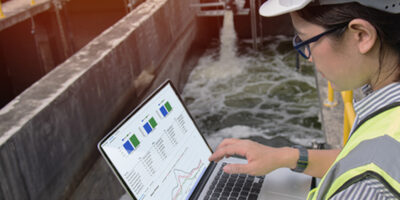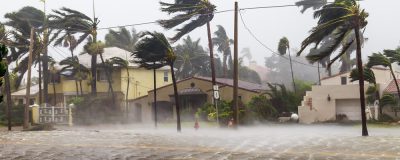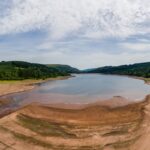‘For centuries, water has been used to extinguish fires. The inexpensiveness and availability of water are the primary factors leading to its widespread use. But, not only must water be available for fire protection, it must be available in adequate supply. As a result, the question must be asked, how much water is necessary to be considered an adequate supply for fire protection?’
(Milke, J.A. 1980. How Much Water Is Enough? The International Fire Chief (March), pp. 21–24.)
How much water is enough?
There are no fire prevention standards that apply to all countries. Generally, the amount of water needed to fight a fire depends on:
- the size of the burning structure
- its construction materials
- the combustibility of its contents; and
- the proximity of adjacent buildings
A commonly-used definition of required fire flow is this: the rate of water flow, at a residual pressure of 20 psi (138 kPa, about 15m) and for a specified duration necessary to control a major fire in a specific structure.
‘How large must our distribution system components be, to provide sufficient water for fire protection?’
This is a question we often get from water utilities.
The decision of whether or not to size distribution system components, including waterlines, appurtenances and storage facilities for fire protection must be made by the governing body of the community.
It is important that fire protection is provided in accordance with a well-thought-out plan. An inadequate fire protection system provides a false sense of security and is potentially more dangerous than no system at all.
In drawing up a plan for fire protection, utilities must explicitly consider fire flow requirements in sizing pipes, pumps and storage tanks. In larger systems, fire protection has a marginal effect on sizing decisions; but in smaller systems, these requirements can correspond to a significant increase in the size of many components.
The most significant impacts are installing and maintaining fire hydrants, providing adequate storage capacity and meeting requirements for minimum pipe sizes in different usage scenarios.
These requirements make designing distribution systems easier for the engineer but more costly for the water utility.
‘For cost savings, water utilities are increasingly using hydraulic models to assess the theoretical capacity of distribution systems when it comes to providing water for fire protection.’
The role of hydraulic models in fire flow assessments
Most hydraulic models provide a ‘Fire Flow Analysis’ option that allows users to calculate the available flow for the design pressure, or the residual pressure for the design flow. Fire flow requirements are one of the most common design requirements when designing new – or evaluating existing – water distribution systems.
There are two basic ways to model a fire flow:
- Specify design fire flow and compute the residual pressure
- Specify design residual pressure and compute the available fire flow rate
Water utilities are starting to discover a new web application that allows for fire flow modelling through predefined scenarios. It includes both the above-mentioned methods and also allows users to compute the free hydrant flow based on the orifice size of a hydrant.
These fire flow simulations can be done simultaneously in up to three nodes at the same time. The simulation results are processed automatically and presented in a practical and understandable manner.
Here’s an example of the user-friendly interface:

Left: OpenStreetMap image of a neighbourhood with water distribution system and fire hydrants. Open Street Map ©2018. Used with permission. Right: Fire flow simulation results; the available fire flow is about 44.5 l/s for the residual pressure of 15m. © DHI
Curious to learn more?
Find out how you radically change the way you manage your daily water network operations. Read about the WaterNet Advisor.








